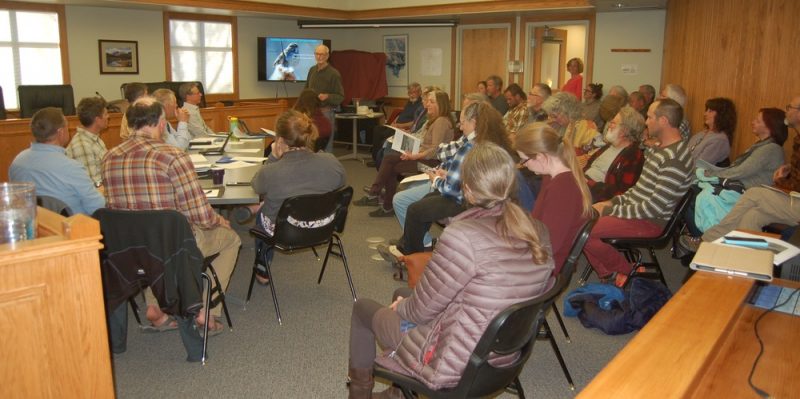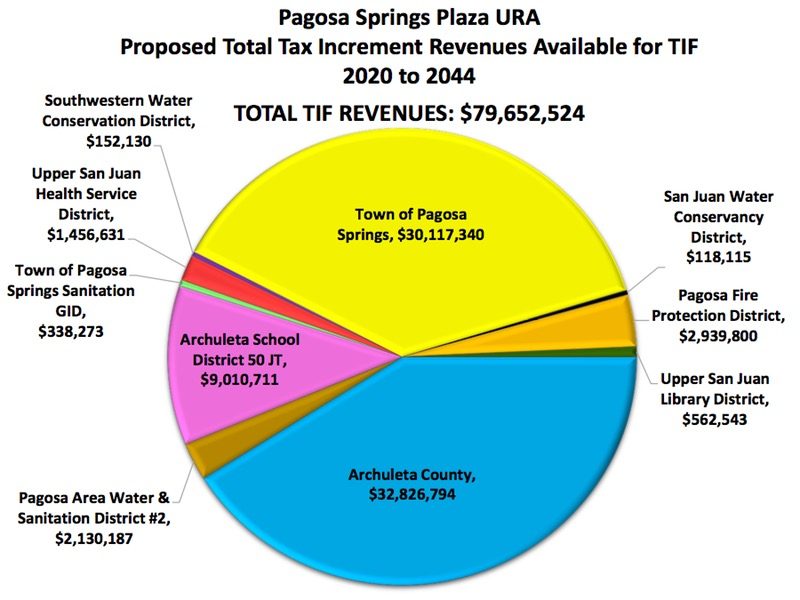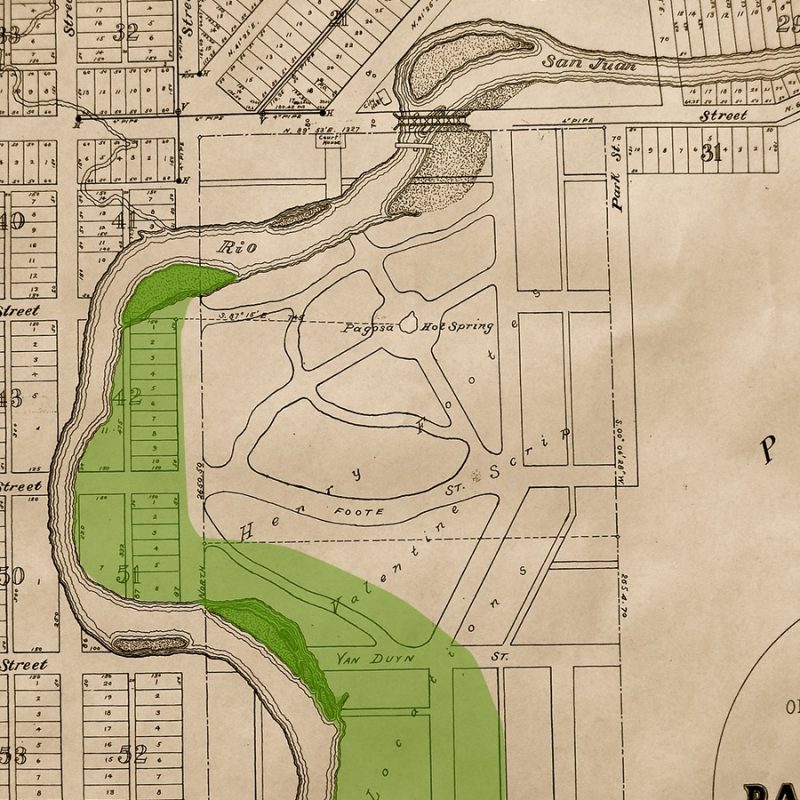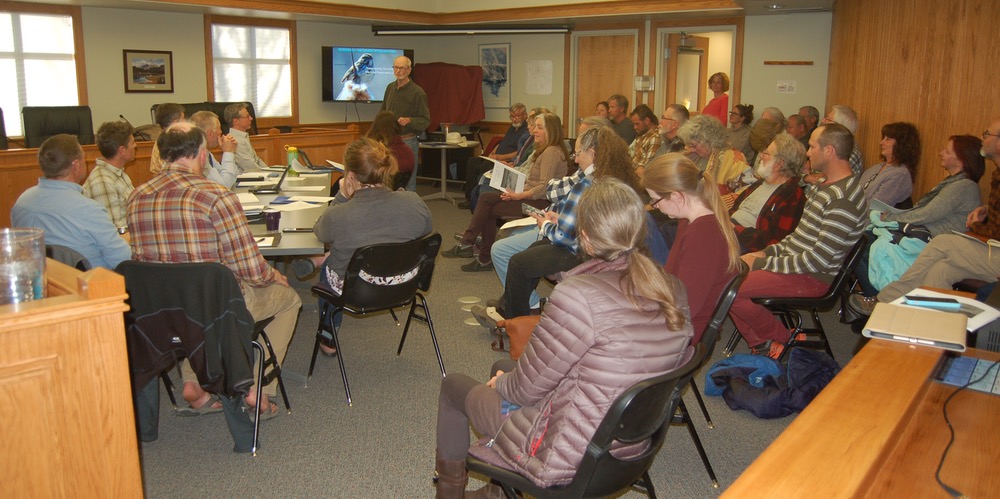“We are pleased to present our concerns regarding the preservation of the Riverwalk Wetlands. We believe that the twin goals of environmental stewardship and town economic development need not be incompatible. We support both goals.
“Mayor Don Volger has requested citizen input and we are here in that spirit of engaged community involvement and feedback. Today we will share with you our understanding of the value of these wetlands to our community, our concerns about the development adjacent to the wetlands, and suggestions to eliminate possible harmful impact to the wetlands…
“We seek to highlight the importance of these wetlands and the natural diversity that they support. We hope you will find this information helpful.”
So begins a written report delivered to the Pagosa Springs Town Council and staff on the evening of February 27, 2020, by a committee of the local Audubon Society calling themselves the “Wetlands Preservation Group”.

The Audubon group managed to pack the audience for its fascinating, 45-minute presentation, and we heard from speakers Bob LeCour, Jean Zirnhelt, Randy McCormick, Barry Knot, and Keith Bruno.
The group’s interest in sharing information about the Riverwalk Wetlands has been sparked by recent public presentations conducted at the Springs Resort and at Town Hall, and by a petition circulated last fall by Jack Searle, a local developer and the owner of 27 vacant acres directly adjacent to the wetlands, requesting the Town Council to create an “Urban Renewal Authority”.
The argument put forward by Mr. Searle and by a representative of the Springs Resort, David Dronet, is approximately this:
For the overall benefit of the Pagosa Springs economy, the vacant travertine meadow directly adjacent to the Riverwalk Wetlands ought to be developed into a mixed-use subdivision, including an expansion of the Springs Resort complex, plus a few retail stores and office buildings, and dozens of high-end condos and town homes. But this beneficial development can happen only if the Town provides tax incentives. The most convenient method for providing those tax incentives would be through an “Urban Renewal Authority” which can easily be created, if a majority of the Town Council (that is, at least four of seven members) would simply declare the vacant meadow — a meadow which has been vacant for 100,000 years, as far as we can tell — to be ‘dangerously blighted’.
If you ask the option of Springs Resort’s attorney, Paul Benedetti, the word ‘blighted’ can be defined to mean ‘never developed.’ Four of the seven current Council members accepted that definition last November, and voted to create the Pagosa Springs Urban Renewal Authority (URA).
One thing that we didn’t hear much about, during months of discussion about a URA and the “urban renewal” of 27-vacant acres, was the Riverwalk Wetlands. Would the proposed “urban renewal” damage the wetlands? Did anyone care?
Another curious aspect of a Town-created URA is that the Authority can compel other local government agencies to contribute tax incentives to an approved “urban renewal” project, for up to 25 years. Last summer, when the Springs Resort hired Colorado Springs-based consultant Mike Anderson to calculate the amount of taxes contributed by each of ten regional taxing entities — the Town, the County, the School District, the Fire District, the Hospital District, the Library District, and four water and sanitation districts — it looked like the 25-year tax incentives would total more than $79 million. Not only would the URA be (theoretically) able to extract 25 years of taxes, they might (or might not) be forcing these other government agencies to participate in the destruction of a valuable tourist attraction.

We were told by Mr. Dronet and Mr. Searle that, without the convenient tax incentives provided by a URA, the vacant 27 acres would, without a doubt, remain vacant far into the future…
Were that to be the case, the Audubon Society might not need to worry so much about the Riverwalk Wetlands. From what I can tell, this rather unique, warm-water wetlands may have existed along this particular bend in the San Juan River since at least 1883, when US Surveyor Benjamin H. Smith surveyed the proposed “Townsite of Pagosa Springs.”
Here’s a section of his 1883 map:

Here’s a portion of the San Juan River, showing the approximate locations of the current Riverwalk Wetlands ponds, indicated on the 1883 map. We can note some “dotted” areas along the river banks.

We can’t tell from the 1883 drawing if these dotted areas were actually “wetlands” at that point in time… or if surveyor Smith was indicating some other type of riparian detail.
But we know a few things. We know that the Town, years ago, made a commitment to preserve and protect the wetlands by establishing a Conservation Easement for the portion of the wetlands that cover municipally-owned property. We know that the Town spent a considerable amount of money installing a pedestrian bridge at South 6th Street, and constructing a wide concrete trail that winds through the wetlands, providing a quiet and rather unique pedestrian experience — a chance to view over 150 species of birds, deer, muskrat, and other wildlife, as well as the wetlands flora.
It’s possible that most of the Council didn’t realize just how unique the San Juan River wetlands actually is. I know that I was enlightened, listening to the Audubon Society presentation on February 27.
On the 1883 plat, almost the entire town is laid out in rectangles — streets meeting at mostly right angles, running past hundreds of 50×150 ft parcels. But the area east of the wetlands seems to illustrate some type of future park, surrounding the Great Pagosa Hot Springs. It’s possible that this park was meant as part of the ‘veterans convalescent hospital’ that the US government had planned for Pagosa Springs, for the treatment of Civil War veterans. That treatment center was never built, and the area surrounding the Mother Spring remained in private ownership, changing hands as the years went by — while the travertine meadow remained mostly vacant.

The Great Pagosa Hot Springs is an impressive water feature, but it can give the impression that all of the geothermal water south of the historical downtown is contained in that particular pool. There is, in fact, a rather sizable geothermal aquifer beneath the ground, and hot water bubbles up or flows underground in various locations around the downtown area. We don’t actually know the size of the aquifer — nor all the exact places where it bubbles up and mixes with the water in the San Juan River.
That hot water, coming from various sources, may be the little-known secret to the wildlife-friendly Riverwalk Wetlands.
Read Part Two, tomorrow…

